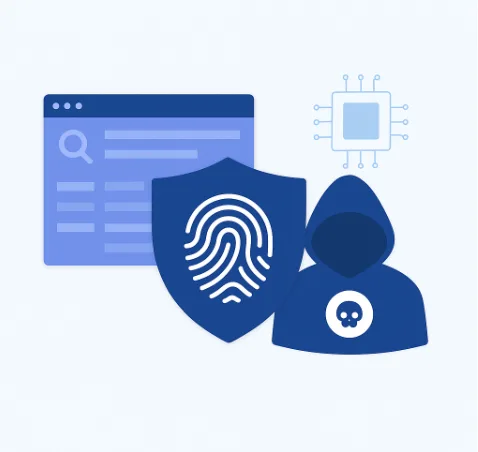
Introduction: Real Threats Target Real Fingerprints
Cybersecurity researchers often test:
- Phishing emails and spoofed domains
- Malicious browser extensions or scripts
- Payload delivery from links or ads
- Browser-based fingerprinting trackers
- Behavior of malware under real-world conditions
But running all these in a typical VM or browser leaves you with:
- Inaccurate results
- Malware detecting your lab
- Fingerprint mismatches
Multilogin gives red teams and analysts the ability to simulate authentic browsers with clean or custom fingerprints, ideal for offensive security and threat analysis.
The Limits of Conventional Malware Sandboxes
| Limitation | Problem |
|---|---|
| Emulated OS/browser | Malware won’t execute |
| Lack of real fingerprint | Fails detection evasion testing |
| Reused cookies and cache | Payloads skip or misfire |
| Static IP ranges | IP block or cloaking fails |
| No session persistence | Impossible to track payload behavior over time |
Attackers are smarter. Analysts must simulate better.
Why Multilogin Works for Offensive Security Teams
✅ 1. Create Clean Browser Containers for Each Test
Multilogin profiles are:
- Isolated from host system
- Customizable (Canvas, WebGL, OS, fonts, plugins)
- Reusable and cloneable
- Proxy-bindable
This means you can:
- Test malicious JS against varied browser setups
- Execute fingerprint-based delivery payloads
- See how malware behaves under “normal” conditions
✅ 2. Simulate Victim Browsers From Different GEOs and OS
Phishing or targeted campaigns behave differently depending on:
- Region (US, EU, SEA, MENA)
- Device (Windows vs macOS)
- Browser (Chrome, Edge, Firefox)
Multilogin lets you:
- Create test containers for each segment
- Switch user-agents, screen size, and timezone
- Bind local or remote proxy IPs
Perfect for phishing kit evaluation and OSINT.
✅ 3. Preserve Sessions to Track Delayed Payloads
Some malware:
- Delays execution for hours
- Requires specific browsing behavior
- Hides behind multiple redirects
Multilogin allows:
- Persistent sessions
- Manual or automated navigation
- Logging of console, headers, and activity
You get ongoing analysis, not just snapshot testing.
✅ 4. Run Controlled Red Team Simulations Safely
Red teamers use Multilogin to:
- Simulate internal employee environments
- Test spear phishing via email links
- Trigger XSS or drive-by-download scenarios
- Evaluate EDR and web proxy responses
Because Multilogin doesn’t rely on VMs, it’s less detectable by attacker payloads.
Use Case: Testing Real Phishing Pages Without Host Risk
A SOC analyst receives:
- A suspicious .link domain from a user
- Suspects credential harvesting or JS injection
Using Multilogin:
- Loads the site in isolated container
- Observes real fingerprint response behavior
- Captures POST requests and injected payloads
- Avoids contaminating host or network
No VMs required. Safer and faster.
Use Case: Threat Hunting Across GEO-Fenced Malware Links
An infosec team wants to test:
- Malware that only delivers in Asia
- Links cloaked based on language/timezone
- Fingerprint-matching shellcode loaders
Multilogin creates:
- 5 containers, each with real IP + matching language
- Monitors behavior through headers + DOM scripts
- Captures attack path and reveals cloaking logic
Pro Tips for Cyber Teams Using Multilogin
| Tip | Usage |
|---|---|
| Set profiles to mimic employee device fleet | Realism for phishing simulation |
| Disable WebRTC unless needed for test | Prevent IP leakage |
| Clone profiles with slight fingerprint differences | Test payload conditionals |
| Bind rotating proxies per campaign | Evade GEO-based filtering |
| Use devtools console logs | Capture script behavior and warnings |
Multilogin vs Traditional Sandbox Environments
| Feature | Sandboxed Browser/VM | Multilogin |
|---|---|---|
| Real Fingerprint Support | ❌ Emulated | ✅ Fully Custom |
| Session Continuity | ⚠️ Reset on reboot | ✅ Persistent |
| GEO Cloaking Resistance | ❌ IP-limited | ✅ Proxy-rich |
| Multiple Test Setups | ❌ Reconfigure VM | ✅ Clone in 1 click |
| Stealth vs Payload Detection | ❌ High | ✅ Low detection risk |
Conclusion: Simulate the Target. Discover the Threat.
Cybersecurity professionals need more than emulators.
They need:
✅ Realistic environments
✅ Fingerprint-matched browser behavior
✅ Persistent session sandboxing
✅ GEO-accurate attack path evaluation
Multilogin bridges the gap between offensive security and scalable, isolated browser control.
👉 Deploy it into your threat lab today:
🔗 https://adblogin.com/multilogin
Leave a Reply
You must be logged in to post a comment.